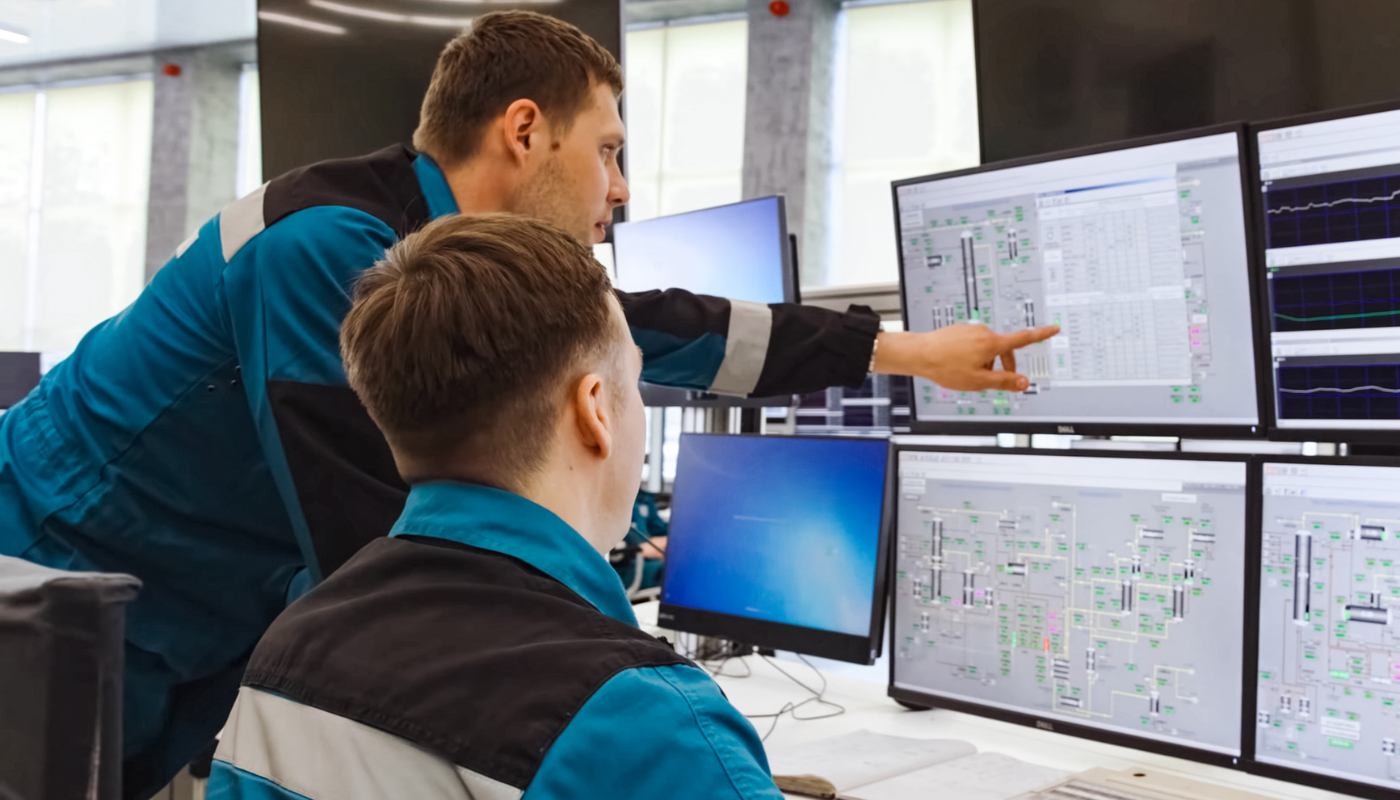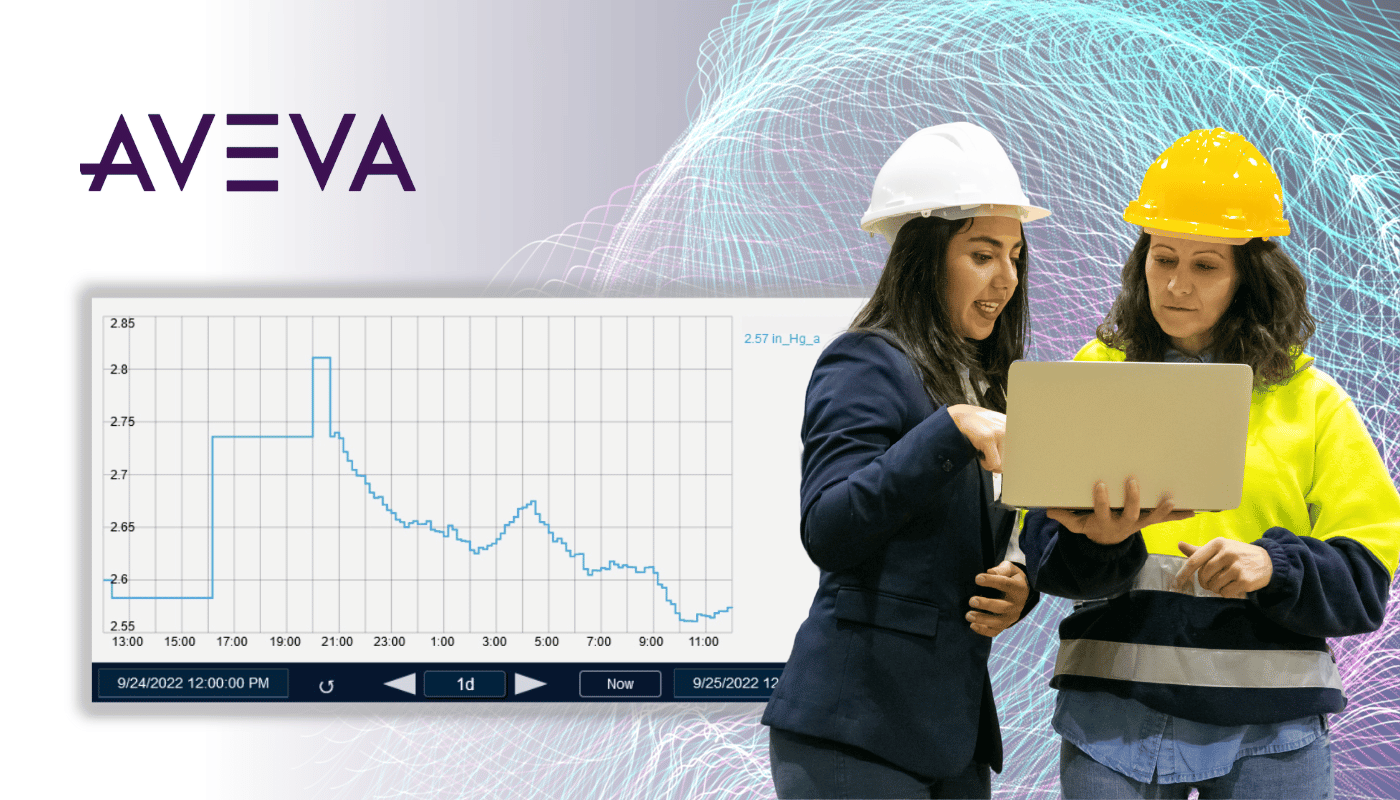Industry 4.0 for Asset Condition Monitoring
Industry 4.0 has revolutionized the way industries operate, bringing in a wave of technological advancements that have transformed conventional...
6 min read
![]() The InCentrik Team
Feb 9, 2024 5:22:00 PM
The InCentrik Team
Feb 9, 2024 5:22:00 PM

In the rapidly evolving landscape of industrial and manufacturing technologies, the convergence of digital and physical systems has given rise to innovations like Digital Twins and Integrated Remote Operations Centers (iROC).
This blog post aims to delve deep into the realm of Digital Twins in manufacturing and explore the synergies with iROCs, offering a comprehensive understanding of these technologies.
How do IIoT Platforms and Digital Twins Interact with Each Other?
Understanding iROC (Integrated Remote Operations Center) in Manufacturing

A Digital Twin in manufacturing is a digital replica of a physical manufacturing process or product. It is a dynamic model that evolves with real-time data from its physical counterpart, allowing for monitoring, analysis, and prediction of performance. This concept extends beyond simulations, offering a mirror to the lifecycle of physical assets in the manufacturing process.
The use of Digital Twins in manufacturing is not just a trend; it's a strategic shift towards more efficient, innovative, and resilient operations. Here are the expanded reasons why integrating Digital Twins in manufacturing processes is becoming indispensable:
Digital Twins enable predictive maintenance by continuously monitoring the condition of equipment and predicting failures before they occur. This foresight significantly reduces unplanned downtime, which is a major cost driver in manufacturing. By anticipating maintenance needs, manufacturing plants can schedule repairs during non-peak times, minimizing disruption and maintaining productivity levels.
The traditional product development cycle involves numerous physical prototypes, each requiring time and resources. Digital Twins revolutionize this process by creating accurate, virtual prototypes that can be tested under a variety of conditions. This not only speeds up the development process but also leads to better-quality products as designers can easily tweak and optimize the designs based on real-time feedback from the Digital Twin.
By mirroring the production process in a virtual environment, Digital Twins allow for extensive analysis and optimization. Manufacturers can experiment with different scenarios to find the most efficient way of operating, from the arrangement of machinery on the shop floor to the fine-tuning of machine settings. This leads to increased throughput, reduced waste, and overall better resource utilization.
In a market where customer preferences are constantly evolving, flexibility and the ability to customize products quickly are critical. Digital Twins enable manufacturers to simulate and plan for various customization options without the need to physically reconfigure the entire production line. This agility in adapting to customer demands is a significant competitive advantage.
Digital Twins extend beyond the confines of the factory, encompassing the entire supply chain. By modeling supply chain dynamics, manufacturers can anticipate disruptions, such as delays from suppliers or changes in demand, and proactively adjust their operations. This capability is particularly valuable in risk management, helping manufacturers to maintain continuity under various scenarios.
The intersection of Digital Twins and data accessibility is a pivotal aspect of their value in manufacturing. Digital Twins thrive on data, and their efficacy is directly proportional to the quality, quantity, and timeliness of the data they receive.
Here's an expanded look at how data accessibility elevates the functionality and impact of Digital Twins in manufacturing:
At the heart of a Digital Twin's capability is the continuous flow of real-time data from various sources such as sensors, machines, and enterprise systems. This integration allows Digital Twins to reflect the current state of the physical counterpart accurately, making them highly reliable for decision-making processes.
With access to historical and real-time data, Digital Twins can employ predictive analytics to forecast future states of the manufacturing process. This foresight is crucial in anticipating equipment failures, production bottlenecks, and supply chain disruptions, allowing for preemptive measures to avoid costly downtimes and inefficiencies.
Digital Twins facilitate a comprehensive view of a product's lifecycle, from design to disposal. By accessing data across all stages, manufacturers can gain insights into usage patterns, maintenance requirements, and end-of-life recycling, leading to better product design and sustainable practices.
The ability to access and analyze data from every corner of the manufacturing process gives an unparalleled visibility to managers and stakeholders. This transparency is key to identifying inefficiencies, ensuring quality control, and optimizing workflows.
The wealth of data available to Digital Twins allows for the application of advanced analytics and machine learning algorithms. These technologies can identify patterns and insights that are not immediately apparent, leading to innovative solutions and continuous process improvement.
The synergy between Industrial Internet of Things (IoT) platforms and Digital Twins is transforming the manufacturing sector by creating a powerful data-driven ecosystem. IoT platforms play a crucial role in gathering real-time operational data from various sensors and machinery, which is then seamlessly integrated into Digital Twins. This integration enables Digital Twins to provide an accurate, real-time representation of physical manufacturing processes, enhancing predictive maintenance, process optimization, and risk management.
This interaction results in a continuous feedback loop where changes in the physical process are reflected in the Digital Twin, allowing for immediate analysis and adaptation. The combined strengths of IIoT and Digital Twins facilitate advanced process optimization, predictive analytics, and remote monitoring, leading to more efficient, safe, and sustainable manufacturing operations. By leveraging this collaboration, manufacturers can proactively address potential issues, adapt to changing market demands, and continuously improve their operations, setting the stage for future innovations in the industry.
iROC represents a centralized hub where organizations remotely manage and monitor critical operations. In manufacturing, iROC serves as the nerve center, offering several advantages:
The integration of Digital Twins with iROC presents a formidable combination in manufacturing:
Implementing these technologies involves assessing digital readiness, developing data infrastructure, selecting the right platforms and partners, and engaging in comprehensive employee training.
InCentrik is at the forefront of transforming industrial operations through cutting-edge asset condition monitoring solutions. Our expertise lies in harnessing the power of advanced analytics and real-time data to revolutionize how industries manage and monitor their assets. Here’s how our innovative solutions contribute to enhancing operational excellence:
At InCentrik, we understand the importance of staying ahead in a rapidly evolving industrial landscape. Our Remote Monitoring and Diagnostics (MD) solution embodies this by providing expert-designed solutions that streamline processes and optimize performance. We offer tailor-made remote diagnostics, backed by a dedicated team committed to constant innovation and proactive support.
Our HeatRate MD solution is specifically designed to maximize the efficiency of power generation plants. By combining advanced analytics with real-time dashboards, InCentrik enables you to elevate your power generation performance. This ensures not only cost-effectiveness but also adherence to sustainable practices, making it an ideal choice for industry leaders.
PI MD represents the pinnacle of harnessing infrastructure data. This system goes beyond mere monitoring of the health of your PI components; it enhances operational insights, ensuring quick problem resolution and optimal system performance in diverse environments.
Bearing MD is our specialized solution for monitoring and diagnosing bearing conditions. It integrates deep analytics to preemptively identify potential failures, enhancing the efficiency and reducing the maintenance costs of various equipment, thereby extending their lifespan.
Valve management is revolutionized with Valve MD. This tool offers detailed analytics and health monitoring for control valves, enabling proactive issue anticipation, functionality optimization, and superior control in operational processes.
Compression MD is designed to revolutionize how data is handled in the PI system. It focuses on optimizing PI system compression and exception settings, intelligently balancing data integrity, storage efficiency, and retrieval speeds. This system offers tailored solutions to fit the unique data landscape of each operation.
What You Need to Know About The Integrated Remote Operations Center (iROC) - Integrated Remote Operations Center 'iROC' are becoming popular as organizations seek ways to improve efficiency and costs. Here's what you need to know.
![]() Leading the digital transformation in the manufacturing industry. We bring our customers value through automation, integration, data management, and business intelligence. We bridge the gap between what really goes on in your plant and the decision-making power you hold as an executive.
Leading the digital transformation in the manufacturing industry. We bring our customers value through automation, integration, data management, and business intelligence. We bridge the gap between what really goes on in your plant and the decision-making power you hold as an executive.
At InCentrik we automate our customers process systems, manage our customer's data (from any data source), make data available to everyone, and we bring business intelligence to the data in order for our customers to work more efficiently. Checkout our Smart Apps including the Crisis Communication App, SmartHub and SmartHub Apps OEE, Shift, PI, Rounds, and Permits.

Industry 4.0 has revolutionized the way industries operate, bringing in a wave of technological advancements that have transformed conventional...

In today's rapidly evolving manufacturing landscape, staying ahead of technological advancements and operational efficiencies is not just an...

In the realm of industrial automation and data management, AVEVA's PI System (formerly OSIsoft's PI System) stands out as a pivotal technology. As...